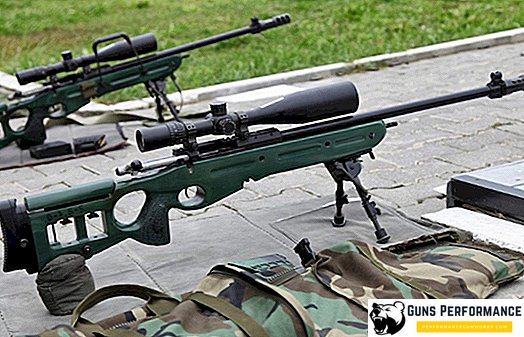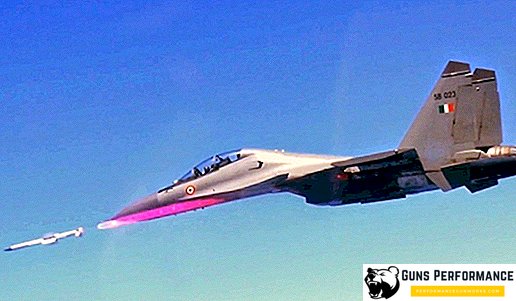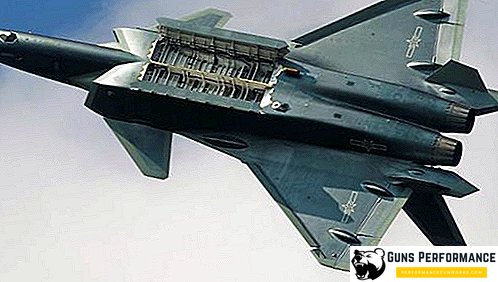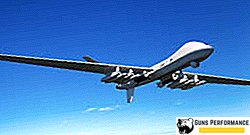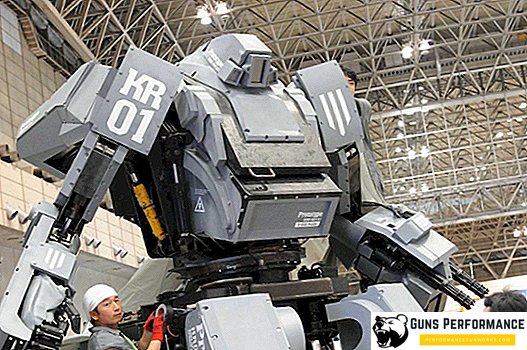MiG-17 has become one of the most common fighters in the world. The aircraft was the result of further modernization of the MiG-15 model. Fighter MiG 17 is a sredneplan normal scheme, which includes one engine in the rear fuselage, swept wing and tail. On the basis of the MiG-17, the first Soviet interceptor MiG-17PFU was built, the armament of which consisted of four air-to-air guided missiles. Despite the fact that in the mid-60s, the MiG-17 was considered an obsolete machine for the USSR, it showed itself perfectly during the Vietnam War.
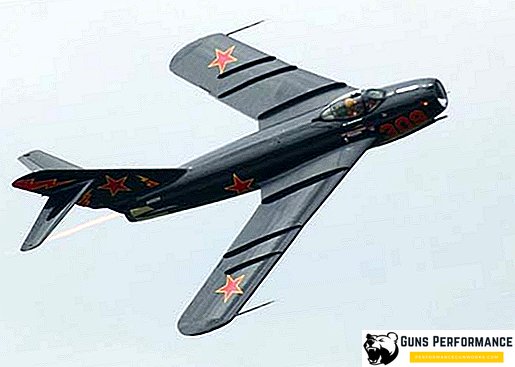
The history of the model MiG-17
In the fall of 1951, the Union government decided to mass-produce the MiG-17 aircraft updated at that time. The car was shown to the public on June 20, 1953 at an aerial parade that took place in Tushino. The success of the model led to the import to other countries - more than 30 countries in Asia, Europe, Africa and the Middle East took the fighter into service with the Air Force.

The MiG-17 was widely used throughout the 1950s and 1980s. Initially, the aircraft was produced in Russia (8000 fighters were recorded), but later production was opened in Poland, where it received the designation Lim-5. Then China started doing the release - the J-5 model went into service. In Sudan, Tanzania, Bangladesh and Pakistan, the aircraft was exported under the designation TF-5 and FT-5. Today it is confirmed that more than 11,000 MiG-17 fighter jets and various modifications came out of factories around the world.
Technical and flight characteristics of the MiG-17 fighter
A lot of data was saved due to careful storage of all development documents, the main role was played by the drawings. Overall characteristics of the aircraft:
- Length - 11.26 m;
- Height - 3.80 m;
- Wingspan - 9.63 m;
- Wing area - 22.60 m3;
- The mass of the empty fighter - 5430 kg.

Power and dynamic characteristics:
- Engine - TRD VK-1A OKB;
- Maximum thrust - 26.5 kN (2700 kgf);
- Maximum speed at the ground - 1100 km / h;
- Maximum speed at an altitude of 3000 meters - 1145 km / h;
- Maximum speed at an altitude of 10,000 meters - 1071 km / h;
- Landing speed of 170-190 km / h;
- Landing speed - 170-190 km / h.
Flight performance:
- Practical range at an altitude of 12 km - 1160 km in the afterburner, 1240 km - without the afterburner;
- Max. operating overload - 8;
- Practical ceiling without afterburner - 16000 m;
- Practical ceiling at afterburner - 15100 m;
- Run length - 820-850 m;
- Takeoff run - 590 m.

The armament of the classic MiG-17 includes one N-37 cannon for 40 rounds and two HP-23 cannons with 160 rounds. Also on the plane can be suspended PTB with a capacity of 400 liters or bombs caliber 50-100 kg, which were installed by means of a girder mount between the chassis, which demonstrate and drawings. The cockpit in this model has become more practical and safe. In the MiG-17 and subsequent modifications, an airtight ventilation-type cabin was used. To improve the view of the pilot, the sliding part is equipped with a periscope. When the knobs are pressed, the pilot leaves the aircraft in an ejection seat.
Combat use of the MiG-17 fighter
The first combat use was at the beginning of its development by combatant pilots in 1956, when the USSR attempted to intercept high-altitude American reconnaissance U-2 and RB-57. July 4, 1956 - this is a significant date for the fighter, since it was on that day that the MiG-17 first set off for a combat mission - to intercept the RB-57. The attempt was unsuccessful - one fighter returned due to an unexpected breakdown, and the second continued pursuit, but the lack of fuel forced the pilot to turn, as a result - the scout left.

In the autumn of the same year, the aircraft found a new combat use - the conflict in Egypt, where the MiG-17 fighter faced its first full-fledged opponents - the French fighters Hurricane and Dassault Mister IV. It should be noted that the modification of the MiG-17F was used in Egypt. The Egyptian Air Force received only 12 aircraft, the main force was MiG-15bis aircraft. In the future, the MiG-17 was used in Vietnam, where it collided with the enemy - with the American Phantom. On one episode of this war a legendary song was composed.

There were attempts to organize the use of the fighter in shock tasks. So, on April 19, 1972, two aircraft went on a sudden attack on the American destroyer. For the United States, this was the first attack that its fleet suffered from since the Second World War. The result of the battle was equal: one destroyer was damaged by a MiG-17 bomb, but at the same time an anti-aircraft missile hit one of the fighters and hit it.

The legendary plane has finished its journey and now rests in military-historical museums. The MiG-17 has a huge number of modifications for different purposes: in some subsequent modifications, the ski gear also appeared.


